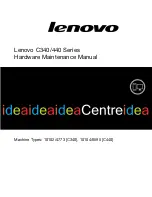
C
hap
te
r 3:
So
no
m
a
Mi
xer
Chapter 3: Sonoma Mixer
87
addition, the channel’s contribution to all the surround channels can be cut or soloed. There
is also an independent control for the contribution to the surround LFE channel.
A divergence of 0% means that all the enabled surround channels (except the LFE) receive
an equal proportion of the audio. A divergence of 100% is the opposite, where it is possible
by hard-panning to send the audio only to one or two surround channels, the remaining
channels receiving nothing.
Stereo Program Mode
Stereo Mode selected and FADER MODE =
PROGRAM
This mode controls the portions of the channel’s signal which are sent to each of the two
stereo channels. This is achieved by a left/right pan and a channel gain. There are disable
buttons for each of the destination channels, plus cut and solo.
Surround Ch 9-16 Mode
Stereo Ch 9-16 Mode
Stereo/Surround Mode selected and FADER MODE =
CHAN 9-16
The eight “short” channels (9 through 16) are not affected by the channel processing blocks
above them (e.g., EQ, dynamics, filters, and insert; these processing steps remain assigned to
channels 1-8). In all respects, the faders operate upon the short channel
inputs
in the same
way as the corresponding program modes operate upon the post-processing signals of
channels 1 to 8.
AUX Send Trim Mode
FADER MODE =
AUX TRIM
This mode controls each channel’s contribution to the AUX bus. It contains, per channel,
four sets of stereo controls and a cut button. These controls can be individually switched
pre-fader (“Pre”), post stereo fader (“St”), or post surround fader (“Su”).
The four sets of stereo controls determine the contribution of the channel to the eight AUX
send buses. AUX 1+2, 3+4, 5+6, 7+8 form these stereo pairs - AUX 1, 3, 5 and 7 correspond
to fully-panned left position, and AUX 2, 4, 6 and 8 correspond to fully-panned right.
The Link area allows you to create and destroy links between processing sections on different
channels and copy settings between them. When a control in a linked group is changed, a
corresponding change occurs in the same control on all the other channels in that group.
3.6.10.1
Linking and Unlinking
Clicking on the LINK button puts the mixer into link mode. Clicking the button again exits link
mode. While in link mode, left-clicking on a control selects the section in which the control appears
rather than changing its value. If the control is the first to be left-clicked after entering link mode, it
becomes the group’s
source
, it will be highlighted by a red bounding-box and a new group number is
displayed in red next to the controls. Subsequent left-clicks on the same section in other channels
places them in the same link group; they are highlighted with a yellow box and labeled with the same
group number. For example, if you were to left-click on LINK and then on Channel 1's EQ section, it
would allocate a link group number to channel 1's EQ (or use the number in existence, if channel 1
already has a link group number) and channel 1 becomes the source. Then if you clicked on
Channel 2's EQ, it would assign this EQ to the same group number as Channel 1's EQ. Note that
other sections, like dynamics, insert, channel gain, and pan are not linked just because the EQ is
linked - this has to be done independently, if required. Sometimes, not all controls in a section are
3.6.10
Linking and Copying Channel Faders and Controls
















































